
Evelyn Pierrepont, 1st Duke of Kingston-upon-Hull, was an English aristocrat.

Duke of Kingston-upon-Hull was a title in the Peerage of Great Britain, with the title Earl of Kingston-upon-Hull being a title in the Peerage of England. The Earldom was created on 25 July 1628 for Robert Pierrepont, 1st Viscount Newark. The Dukedom was created on 10 August 1715 for his great-grandson, Evelyn Pierrepont, 1st Marquess of Dorchester, who had succeeded as the fifth Earl of Kingston-upon-Hull in 1690. The Dukedom became extinct on the death of the second Duke in 1773. Unlike the city to which they refer, Kingston upon Hull, which is usually shortened to Hull, these titles are usually shortened to Duke of Kingston.. They should not be confused with the separate Irish Earldom of Kingston.

Earl Manvers was a title in the Peerage of the United Kingdom. It was created in 1806 for Charles Medows Pierrepont, 1st Viscount Newark. He had already been created Baron Pierrepont, of Holme Pierrepont in the County of Nottingham, and Viscount Newark, of Newark-on-Trent in the County of Nottingham, in 1796. Both these titles were in the Peerage of Great Britain. Born Charles Medows, he was the second son of Philip Medows, Deputy Ranger of Richmond Park, by Lady Frances Pierrepont, daughter of William Pierrepont, Earl of Kingston (1692–1713), eldest son and heir apparent of Evelyn Pierrepont, 1st Duke of Kingston-upon-Hull. The name of the earldom derives from the Manvers family, from a marriage to an heiress of which family the family seat of Holme Pierrepont had passed into the Pierrepont family in the 13th century.

Viscount Newark is a title that has been created twice in British history, each time with the subsidiary title of Baron Pierrepont.
Pierrepont is the name or part of the name of several communes in France:

Robert Pierrepont, 1st Earl of Kingston-upon-Hull was an English nobleman who joined the Royalist side in the English Civil War after some delay and became lieutenant-general of the counties of Lincoln, Rutland, Huntingdon, Cambridge and Norfolk. He was killed in a friendly fire incident after being captured by Parliamentary forces.

Henry Pierrepont, 1st Marquess of Dorchester, PC, FRS, FRCP was an English peer. He was the son of Robert Pierrepont, 1st Earl of Kingston-upon-Hull, and his wife, the former Gertrude Talbot, daughter of George Talbot and Elizabeth Reyner, and cousin of the Earl of Shrewsbury.

Holme Pierrepont is a hamlet and civil parish located 5 miles (8 km) south-east of the city of Nottingham in Nottinghamshire, England. It is in the Gamston ward of the Rushcliffe local authority in the East Midlands region. The population of the civil parish as at the 2011 Census was 528.

This is a list of people who have served as Lord Lieutenant of Nottinghamshire. Since 1694, all Lords Lieutenant have also been Custos Rotulorum of Nottinghamshire.

Evelyn Pierrepont, 2nd Duke of Kingston-upon-Hull, KG was an English nobleman and landowner, a member of the House of Lords. He was the only son of William Pierrepont, Earl of Kingston-upon-Hull (1692–1713) and his wife, Rachel Bayntun (1695–1722).
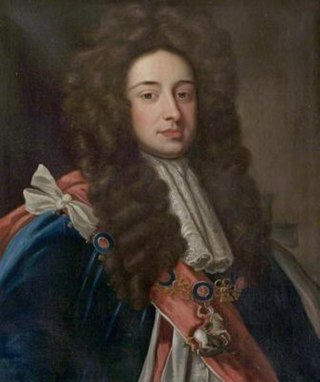
John Holles, Duke of Newcastle-upon-Tyne, KG, PC was an English peer.

Henry Cavendish, 2nd Duke of Newcastle-upon-Tyne, KG, PC, styled Lord Henry Cavendish until 1659, and Viscount Mansfield from 1659, was an English politician who sat in the House of Commons from 1660 to 1676, and then inherited the dukedom.

Baron Pierrepont is a title that has been created four times in British history. The first creation came in the Peerage of England on 29 June 1627 when Sir Robert Pierrepont was created Baron Pierrepont, also being created Viscount Newark at the same time. He was further created Earl of Kingston-upon-Hull in 1628. The fifth Earl was created Duke of Kingston-upon-Hull in 1715 in the Peerage of Great Britain, with the Dukedom becoming extinct on the death of the second Duke in 1773.

Charles (Medows) Pierrepont, 1st Earl Manvers was a British naval officer and politician who sat in the House of Commons from 1778 to 1796 when he was raised to the peerage as Viscount Newark.
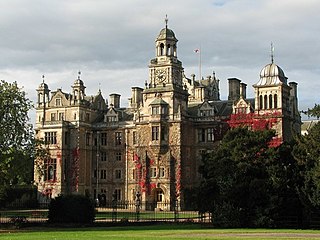
Thoresby Hall is a grade I listed 19th-century country house in Budby, Nottinghamshire, some 2 miles (4 km) north of Ollerton. It is one of four neighbouring country houses and estates in the Dukeries in north Nottinghamshire all occupied by dukes at one time during their history. The hall is constructed of rock-faced ashlar with ashlar dressings. It is built in four storeys with a square floor plan surrounding a central courtyard, nine bays wide and eight bays deep.

Nathan Haines was an English priest. He was born c.1735/6 and died 27 April 1806.
Nottinghamshire was a county constituency of the House of Commons of the Parliament of England then of the Parliament of Great Britain from 1707 to 1800 and of the Parliament of the United Kingdom from 1801 to 1832. It was represented by two Members of Parliament (MPs), traditionally known as Knights of the Shire.
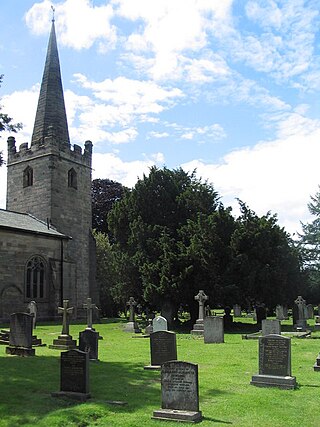
St Edmund's Church, Holme Pierrepont is a parish church in the Church of England in Holme Pierrepont, Nottinghamshire.
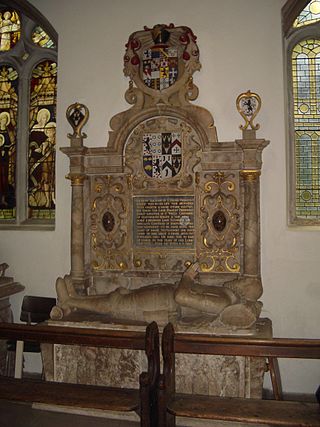
Sir Henry Pierrepont was an English MP who resided at Holme Pierrepont, Nottinghamshire.
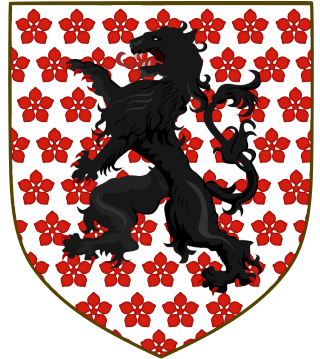
William Pierrepont, 4th Earl of Kingston-upon-Hull was a British peer and Member of Parliament.



















